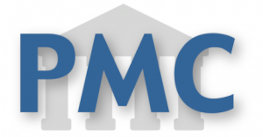Documentdetail
ID kaart
oai:pubmedcentral.nih.gov:1087...
Onderwerp
Research ArticleAuteur
Liu, Yin Xu, Huifang Lv, Lihong Wang, Xiaoyang Kang, Ruihua Guo, Xiaoli Wang, Hong Zheng, Liyang Liu, Hongwei Guo, Lanwei Chen, Qiong Liu, Shuzheng Qiao, Youlin Zhang, ShaokaiLangue
enEditor
BioMed Central
Categorie
BMC Medicine
Jaar
2024
vermelding datum
11-06-2024
Trefwoorden
benefit–harm intervals screenings smokers strategy cost-effectiveness heavy quo status strategies cancer lungBeschrijving
BACKGROUND: Annual screening through low-dose computed tomography (LDCT) is recommended for heavy smokers.
However, it is questionable whether all individuals require annual screening given the potential harms of LDCT screening.
This study examines the benefit–harm and cost-effectiveness of risk-based screening in heavy smokers and determines the optimal risk threshold for screening and risk-stratified screening intervals.
METHODS: We conducted a comparative cost-effectiveness analysis in China, using a cohort-based Markov model which simulated a lung cancer screening cohort of 19,146 heavy smokers aged 50 ~ 74 years old, who had a smoking history of at least 30 pack-years and were either current smokers or had quit for < 15 years.
A total of 34 risk-based screening strategies, varying by different risk groups for screening eligibility and screening intervals (1-year, 2-year, 3-year, one-off, non-screening), were evaluated and were compared with annual screening for all heavy smokers (the status quo strategy).
The analysis was undertaken from the health service perspective with a 30-year time horizon.
The willingness-to-pay (WTP) threshold was adopted as three times the gross domestic product (GDP) of China in 2021 (CNY 242,928) per quality-adjusted life year (QALY) gained.
RESULTS: Compared with the status quo strategy, nine risk-based screening strategies were found to be cost-effective, with two of them even resulting in cost-saving.
The most cost-effective strategy was the risk-based approach of annual screening for individuals with a 5-year risk threshold of ≥ 1.70%, biennial screening for individuals with a 5-year risk threshold of 1.03 ~ 1.69%, and triennial screening for individuals with a 5-year risk threshold of < 1.03%.
This strategy had the highest incremental net monetary benefit (iNMB) of CNY 1032.
All risk-based screening strategies were more efficient than the status quo strategy, requiring 129 ~ 656 fewer screenings per lung cancer death avoided, and 0.5 ~ 28 fewer screenings per life-year gained.
The cost-effectiveness of risk-based screening was further improved when individual adherence to screening improved and individuals quit smoking after being screened.
CONCLUSIONS: Risk-based screening strategies are more efficient in reducing lung cancer deaths and gaining life years compared to the status quo strategy.
Risk-stratified screening intervals can potentially balance long-term benefit–harm trade-offs and improve the cost-effectiveness of lung cancer screenings.
SUPPLEMENTARY INFORMATION: The online version contains supplementary material available at 10.1186/s12916-024-03292-4.
Liu, Yin,Xu, Huifang,Lv, Lihong,Wang, Xiaoyang,Kang, Ruihua,Guo, Xiaoli,Wang, Hong,Zheng, Liyang,Liu, Hongwei,Guo, Lanwei,Chen, Qiong,Liu, Shuzheng,Qiao, Youlin,Zhang, Shaokai, 2024, Risk-based lung cancer screening in heavy smokers: a benefit–harm and cost-effectiveness modeling study, BioMed Central

Choice Between Partial Trajectories: Disentangling Goals from Beliefs
agents models aligned based bootstrapped learning reward function model return choice choices partial
Adverse and serious adverse events incidence of pharmacological interventions for managing chronic and episodic migraine in adults: a systematic review
aes medications bta incidence migraine drugs disorders

